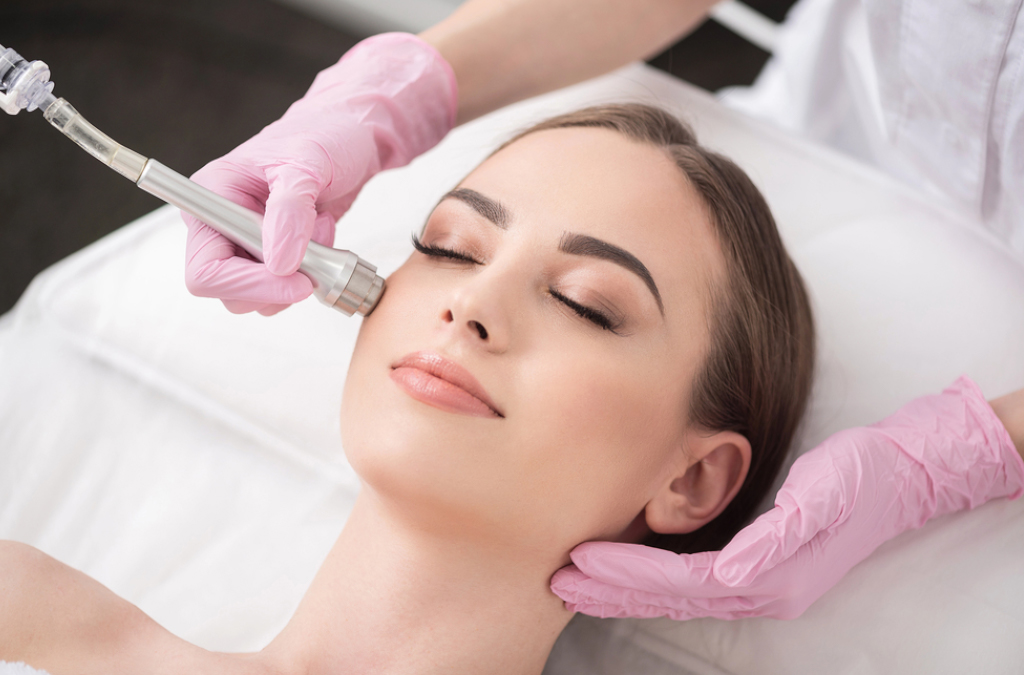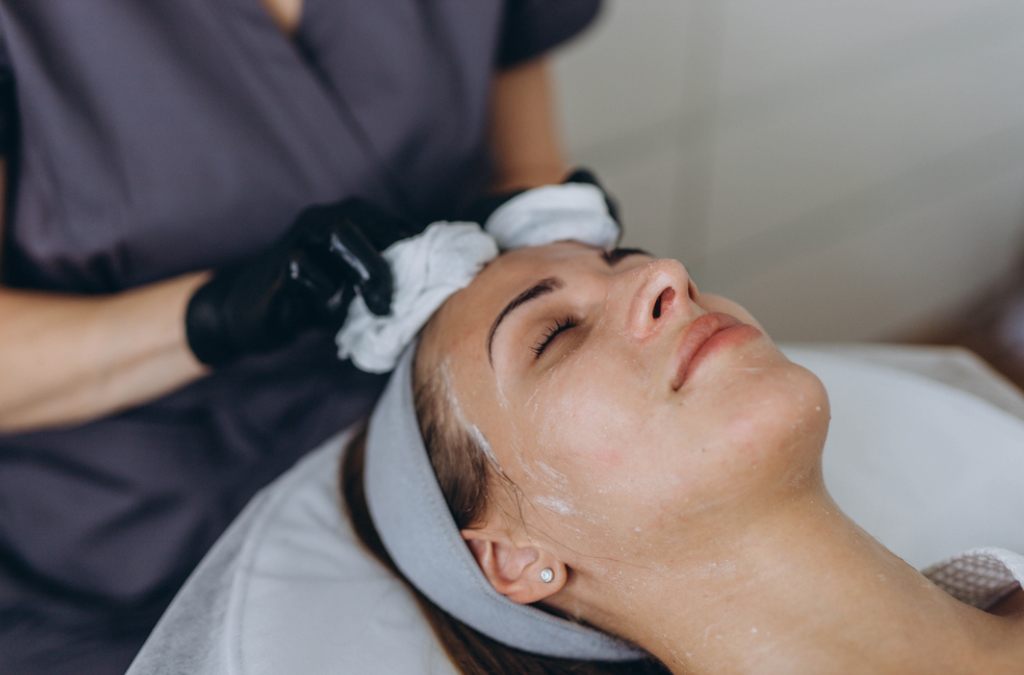Entering the field of skincare requires more than passion or creativity. Before you can begin helping clients look and feel their best, you must pass your state’s esthetician board exam. This exam validates your training and your readiness for a professional role in skincare.
For students researching financial aid for esthetician school, understanding what the exam covers is equally important. At Southern California College of Barber & Beauty, we help our students build confidence through structured learning and preparation that align with real exam expectations.
What Makes the State Board Esthetician Exam Important
Becoming a licensed esthetician means mastering a blend of theory, technique, and professionalism. The exam ensures every licensed professional meets the same standard of competence. It is designed to assess how safely and effectively you can perform skincare services. Even if you have strong hands-on ability, this test measures how well you understand sanitation, skin science, and state laws related to beauty practices.
Many students feel anxious before testing. That is natural. Yet, when you understand what the exam looks like and how it is scored, the process becomes more predictable and less intimidating. The structure of the exam gives you an outline for how to prepare and with the right school and consistent effort, passing becomes achievable.
The Two Main Parts of the Exam
Most states divide the esthetician board exam into two key components: a written test and a practical test. The written portion assesses your theoretical understanding of skincare, anatomy, infection control, and professional ethics. It includes multiple-choice questions that test your ability to recognize proper procedures and safety standards.
The practical portion measures your performance in a simulated service environment. You will demonstrate facial treatments, hair removal, mask application, and proper cleanup techniques. Each step shows the examiner how closely you follow professional guidelines and safety procedures. Some states require live models, while others permit mannequins. No matter the setup, organization, cleanliness, and calm execution are vital.
At our esthetician program, we teach students how to balance both areas: science-based knowledge and real-world application. Each class reinforces confidence through repetition, supervision, and feedback.
What the Written Section Covers
The written section of the exam usually features 100 to 120 multiple-choice questions. The first portion focuses on scientific concepts like skin structure, cells, tissue, and microbiology. Expect questions about the layers of the skin, functions of glands, and ways bacteria spread or are controlled. You will also see topics such as:
- Sanitation and disinfection standards
- Anatomy and physiology related to skin health
- Product chemistry and pH balance
- Common diseases and contraindications
The second portion emphasizes service-related practices. It covers everything from skin analysis and exfoliation to waxing and makeup theory. You might be asked about color harmony, facial massage techniques, or correct steps for applying products. The written test blends memorization with critical thinking, helping you understand the “why” behind each procedure.
The Practical Section Explained
During the practical exam, you perform a series of treatments within a specific timeframe. Examiners watch how you prepare your workspace, organize tools, and interact with your model. They observe your technique, timing, and sanitation habits. Even small details, such as properly labeling containers or safely disposing of used items, can affect your score.
Students are commonly tested on areas like:
- Setting up and sanitizing the workstation
- Cleansing, steaming, and exfoliating the client’s face
- Performing facial massages and mask applications
- Conducting safe hair removal through tweezing or waxing
- Applying makeup and demonstrating post-service cleanup
To prepare, students at our college perform mock exams that mimic real testing conditions. Repetition under supervision helps them become comfortable, precise, and efficient.
How Long the Exam Takes
The entire process typically spans two to three hours, depending on the state. The written exam often lasts 90 to 120 minutes, while the practical section may take another hour or more. Each practical task is timed, usually 15 to 20 minutes per section. Managing time effectively is just as important as mastering the steps themselves.
Our instructors emphasize timing early in the training process. Through regular practice, students learn to move smoothly from one task to the next without rushing. That rhythm builds the confidence they need when testing day arrives.
How Difficult Is the Exam Really?
The exam is challenging, but not impossible. Its goal is to verify readiness, not to discourage students. The questions and procedures are based directly on what you learn during your training hours. With focused study and consistent practice, most students can pass on the first attempt.
Still, the level of difficulty depends on preparation. Students who rely only on memorization often struggle. The key lies in understanding the “why” behind each concept. For instance, you might know how to sanitize a tool, but understanding why certain disinfectants work better gives you an edge in both exams and professional settings.
At Southern California College of Barber & Beauty, we integrate exam concepts into every module so students absorb the material naturally, not just for test purposes. This approach helps them transition smoothly into their careers after passing.
Common Challenges Students Face
Many test-takers experience stress on exam day. Others underestimate the amount of material they must review. Some forget to prepare their practical kits according to state requirements, resulting in lost points. Common mistakes include:
- Bringing incomplete or unlabeled supplies
- Skipping sanitation steps during the practical
- Mismanaging time between service segments
- Neglecting to review updated regulations for their state
To counter these issues, we train students to build habits early. Every practice session reinforces organization, hygiene, and composure. By the time our students face the real test, those actions become second nature.
Why Preparation Matters Beyond Passing
Passing the state board exam represents more than simply earning a license; it reflects your ability to perform services safely, professionally, and effectively. Each procedure you execute in the exam mirrors real-world expectations, emphasizing cleanliness, precision, and client care. These habits do not end with graduation. They shape your professional reputation and demonstrate reliability to future employers and clients.
A licensed esthetician is trusted not only for technical skill but also for understanding safety protocols, client communication, and proper sanitation. By preparing thoroughly for the exam, you develop these habits consistently.
This preparation builds a strong foundation for a long-term career in skincare, where competence, confidence, and professionalism are key to success and growth in the industry.
How to Prepare Effectively for the Exam
Preparation should begin long before your test date. Cramming is rarely effective in a subject that involves both technical skill and practical execution. A consistent study plan gives you time to absorb details and practice procedures correctly.
Start by reviewing every major topic covered during your Esthetician Program. Focus on infection control, client safety, anatomy, and treatment protocols. Organize notes by categories and review them in short, daily sessions. This repetition helps your memory retain information more naturally.
Take practice exams to simulate the written test. Many online platforms offer sample questions modeled after real state board formats. Track your progress and revisit areas where your scores dip. This method transforms test anxiety into awareness and strategy.
For the practical section, repetition is key. Set up mock sessions at home or with classmates. Practice setting up your station, labeling tools, and following sanitation steps exactly as you would during the test. Confidence grows from familiarity.
Managing Time and Stress on Test Day
Even the most prepared students can lose focus under pressure. Managing nerves is part of exam readiness. Arrive early, bring complete documentation, and double-check your kit. Before starting, take deep breaths to center yourself.
During the practical, follow each instruction calmly. Do not rush, but do not hesitate either. Remember, examiners grade consistency and safety as much as precision. Think of each step as a routine service for a real client, not just a test.
Time management also matters for the written section. If a question seems confusing, move on and return later. Spending too long on one question wastes valuable minutes. The goal is steady progress, not perfection on the first try.
What Happens After You Pass
Passing the state board exam opens the door to a professional career in skincare. With your license, you can work in spas, salons, and wellness centers, or even start your own practice. More importantly, passing demonstrates professionalism and trustworthiness to future clients.
Every licensed esthetician remembers that first success. It is not only about mastering content, it reflects dedication and care for the people you will serve. That mindset defines your reputation from day one.
Supporting Your Journey with Us
At Southern California College of Barber & Beauty, we understand what it takes to pass and to thrive afterward. Our faculty combines decades of professional experience with structured, compassionate teaching. From theory to hands-on training, we prepare students to face both portions of the exam confidently.
We also assist students exploring financial aid for esthetician school, helping them focus on learning instead of financial strain. Our goal is to make your education accessible, meaningful, and career-ready. When you train with us, you gain more than certification. You gain a lifelong skill set that can turn your passion for skincare into a lasting profession.




